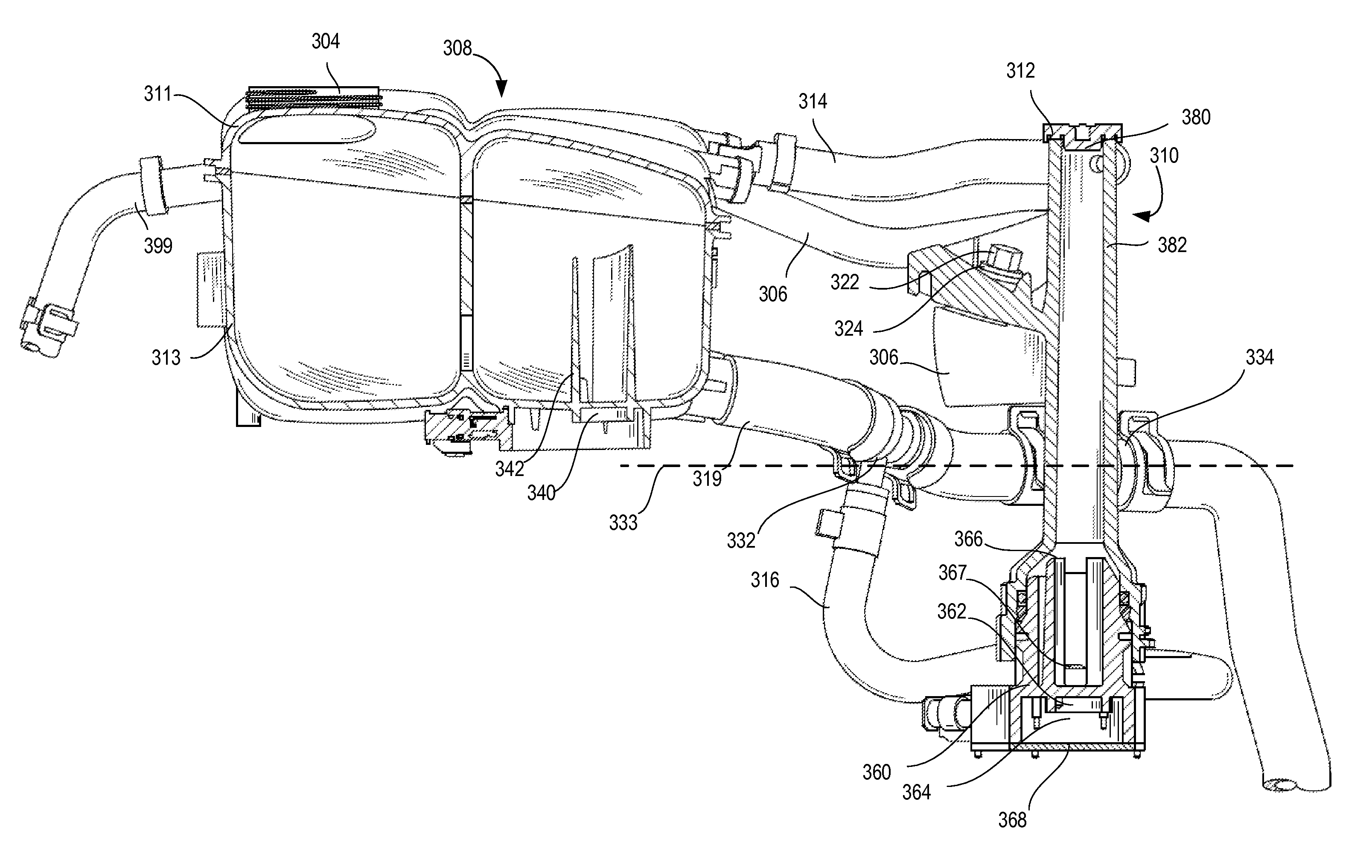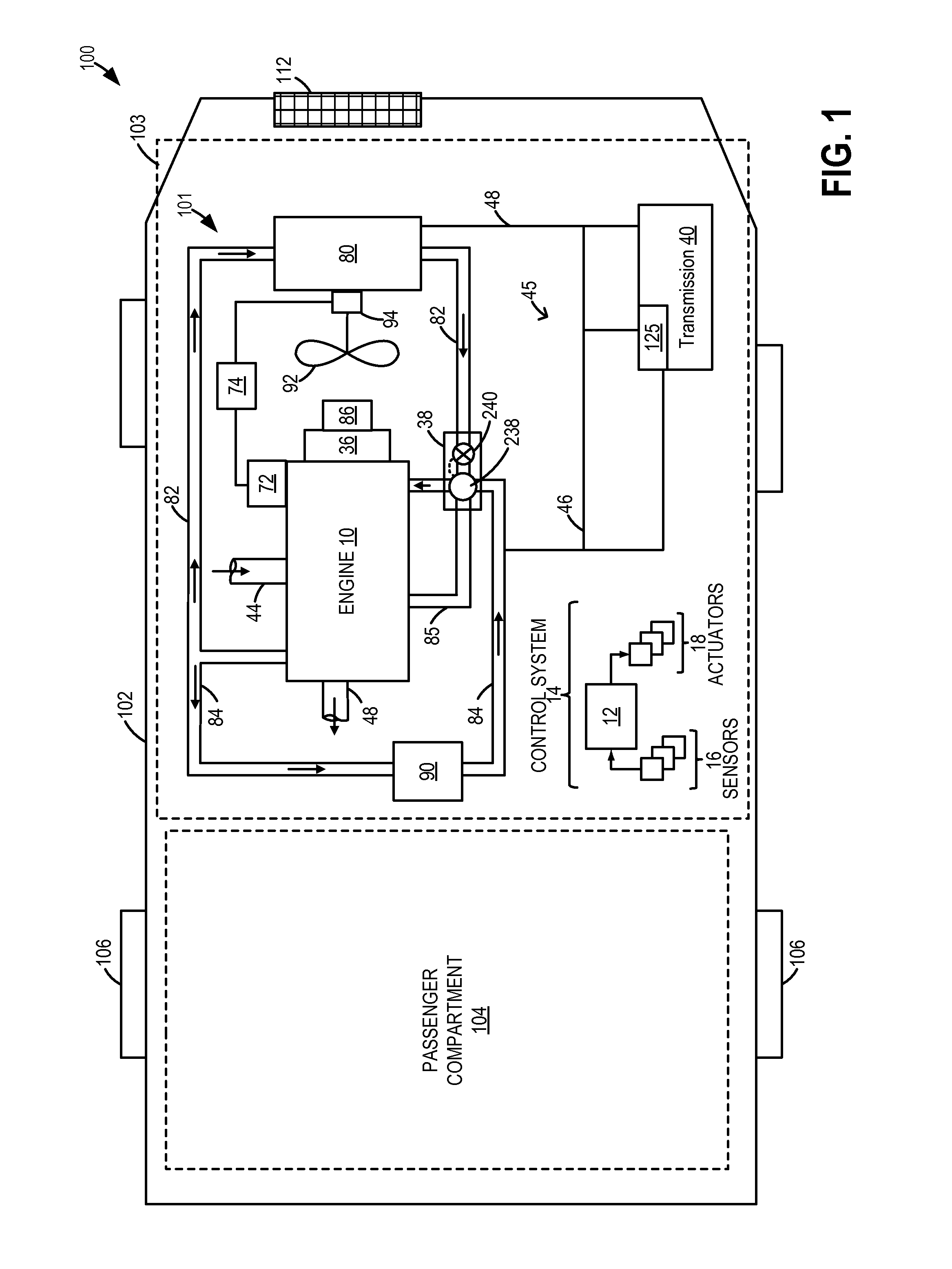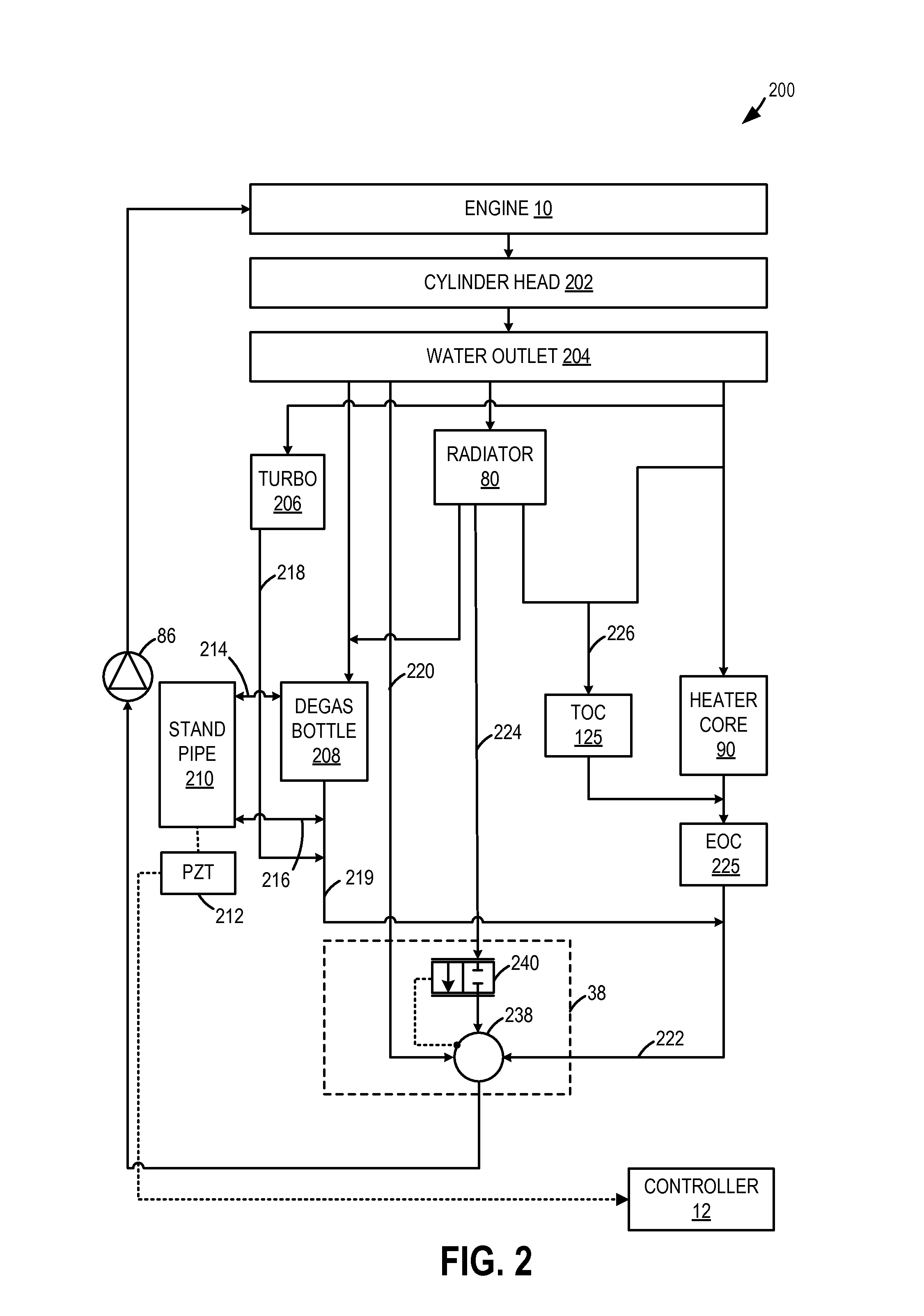Method and system for engine cooling system control
a technology of engine cooling system and cooling system, applied in the direction of machines/engines, liquid/fluent solid measurement, instruments, etc., can solve the problems of poor cooling performance, too large air volume to build sufficient pressure, and achieve the loss of similar cooling system performance, reduce sensor power requirements, and optimize sensor output.
- Summary
- Abstract
- Description
- Claims
- Application Information
AI Technical Summary
Benefits of technology
Problems solved by technology
Method used
Image
Examples
Embodiment Construction
[0028]The following description relates to systems and methods for controlling an engine of a vehicle, the engine having a cooling system such as that of FIGS. 1-2. The cooling system may include a coolant overflow reservoir, herein also referred to as a degas bottle, fluidly connected to a narrow vertical standpipe, as discussed at FIGS. 3-8. The vertical standpipe may include a level sensor broadcasting information to an engine controller for determining an amount of coolant within the standpipe, as elaborated at FIGS. 9-12. The controller may also estimate an amount of coolant within the degas bottle (herein also referred to as a bulk coolant level), based on the amount of coolant within the standpipe (herein also referred to as a local coolant level) and various motion parameters, as described at FIGS. 13-17. Based on the estimate of coolant, the controller may indicate a coolant state, and based on the coolant state, restrictions may be placed on engine operating parameters, as...
PUM
 Login to View More
Login to View More Abstract
Description
Claims
Application Information
 Login to View More
Login to View More - R&D
- Intellectual Property
- Life Sciences
- Materials
- Tech Scout
- Unparalleled Data Quality
- Higher Quality Content
- 60% Fewer Hallucinations
Browse by: Latest US Patents, China's latest patents, Technical Efficacy Thesaurus, Application Domain, Technology Topic, Popular Technical Reports.
© 2025 PatSnap. All rights reserved.Legal|Privacy policy|Modern Slavery Act Transparency Statement|Sitemap|About US| Contact US: help@patsnap.com



